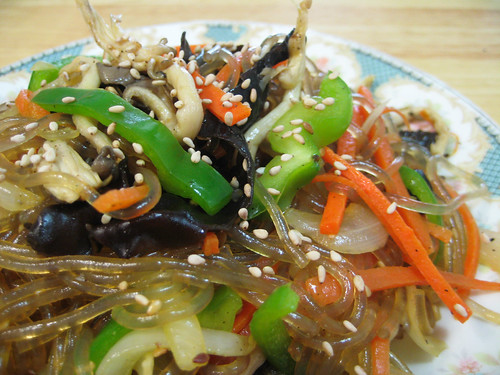
I'm sure I'm not alone in this, but one of my all-time favorite Korean dishes is japchae. Japchae is a dish made from glassy potato starch noodles, mixed with a variety of panfried veggies, and flavored with soysauce. I'm generally not a noodle lover, but this is one of the very few noodle dishes that I actually crave. I think this is a popular dish among foreigners too, as there's something universally loveable about japchae. It's not too spicy, it usually doesn't include scary ingredients, it's multi-textural, and the flavor of all the veggies in combination with the sesame oil is simply divine. Moreover, while some restaurants like to add bits of beef or shrimp, I find that vegetarian japchae is more common, probably because it's cheaper. Assah.
However, as much as I wish I could eat japchae every day, this dish is usually reserved for more special meals because it does require some extra prep work, such as slicing the various veggies, sauteing them all separately, and cooking the noodles, etc. But if you have time, this dish is definitely worth the extra effort. I've helped my mom make japchae numerous times, but never wrote an official recipe to share... til now! As always, the measurements are flexible and can be adjusted based on your preferences.
Japchae!
100g dried potato starch noodles (당면, "dangmyun" or "Korean vermicelli noodles")
1/2 carrot
1/2 onion
1 green bell pepper
2 cups neutari mushrooms (느타리버섯)
1 cup black fungus mushrooms (모기버섯)
canola or grapeseed oil for sauteeing
salt for sauteeing
1 Tbs sesame seeds
black pepper, to taste
*additional veggie options: red bell pepper, spinach, shiittake mushrooms...
sauce
2 1/2 Tbs soy sauce
1 Tbs sugar or sweetener of choice
1 Tbs sesame seed oil
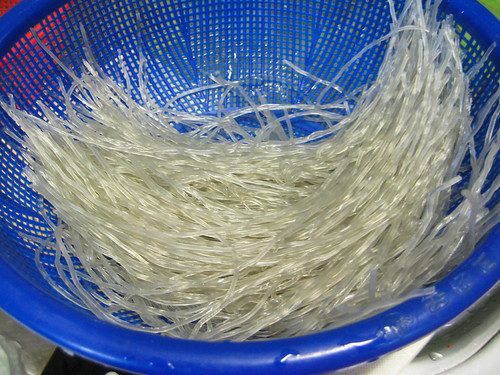
Soak the dry noodles in water for 30 minutes and drain, and begin boiling a large pot of water.
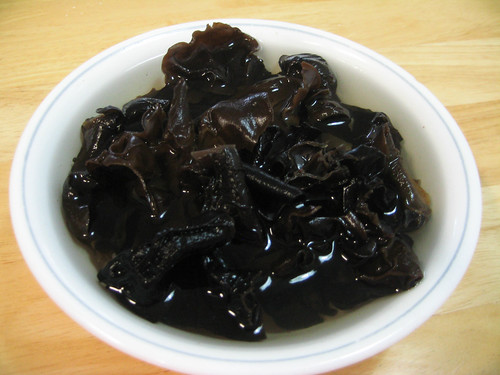
If using dry black fungus mushrooms, reconstitute them by soaking in warm water (or according to package instructions). Roughly chop into bite-size pieces. Just a little bit of dried mushrooms will bloom and expand greatly in size, so just use about 1-2 Tbs of the dried mushrooms at first.
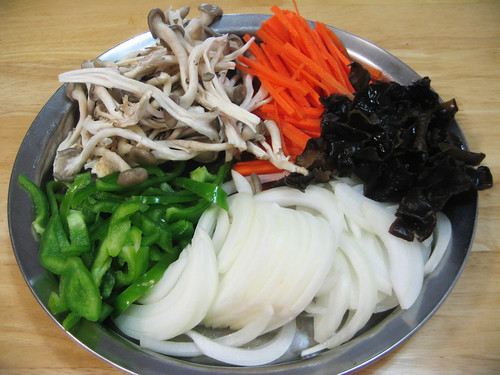
Next, mise en place. Chop all your veggies in uniform long, thin slices. From top clockwise: carrots, black fungus mushrooms, onions, green bell peppers, neutari mushrooms (느타리버섯).
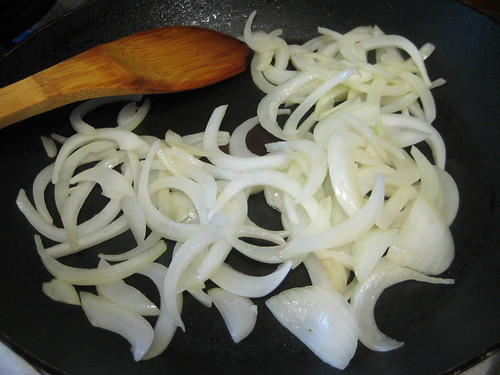
Pan-fry each vegetable separately in a lightly greased pan with a pinch of salt. Start with the light-colored veggies first, so that the colors don't mix and get muddled. For instance, you don't want to fry the carrots first because they will stain the pan orange and likely affect the color of the other veggies.
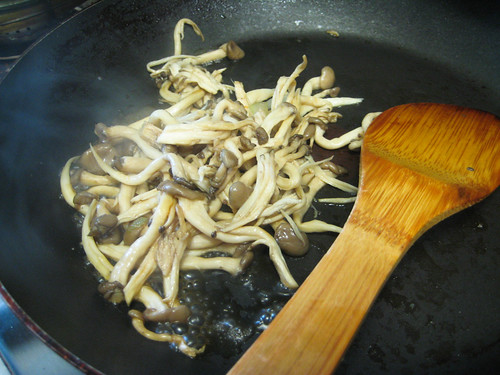
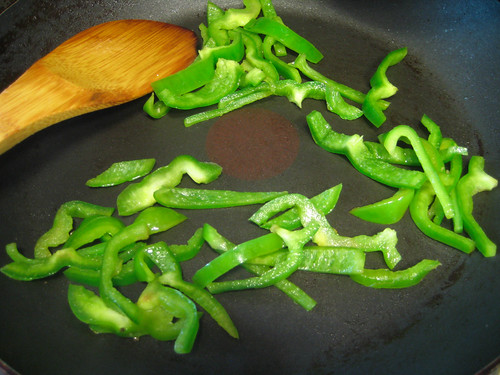
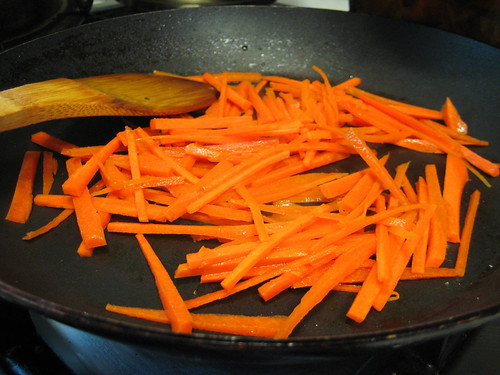
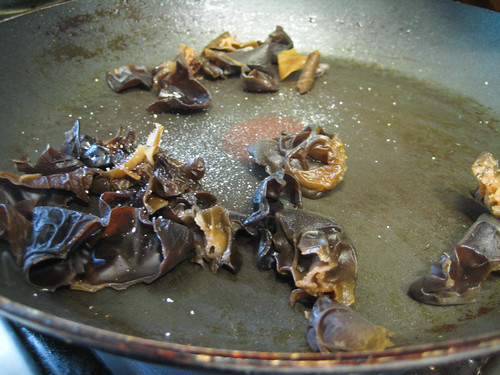
Sautee the veggies until they are slightly soft and bendy. They shouldn't be totally mushy, but should retain some texture. Also, to avoid having black char bits on the veggies, you can gently wipe down the pan with a paper towel after each sautee and add more oil (about 1 tsp) before the next ingredient.
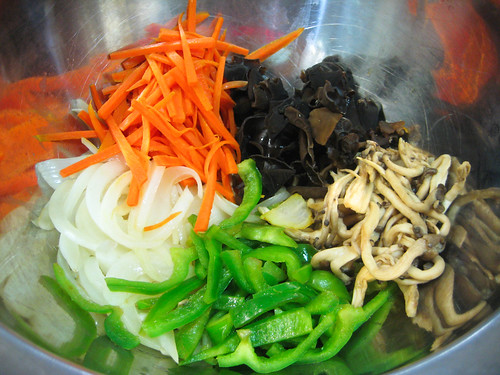
Place all the sauteed ingredients in a large mixing bowl.
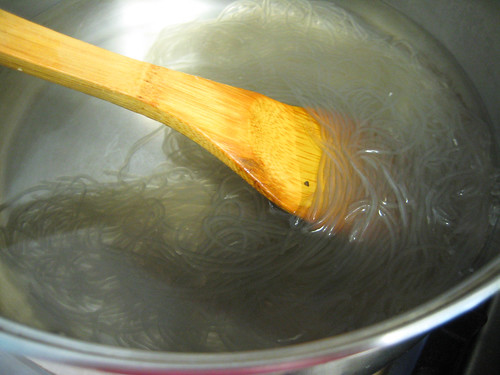
By now, the pot of water should be boiling. Add the soaked and drained noodles and cook according to package instructions. Usually, you will boil the noodles for about 5-6 minutes, until they are about 80% done. They should be soft yet chewy.
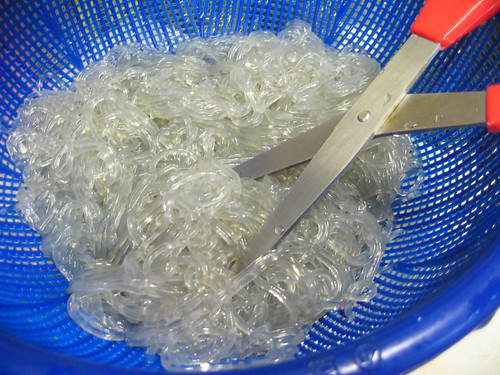
Next, drain the noodles in a colander and rinse well under cold running water. Using a pair of scissors, cut the noodles to a decent, manageable length.
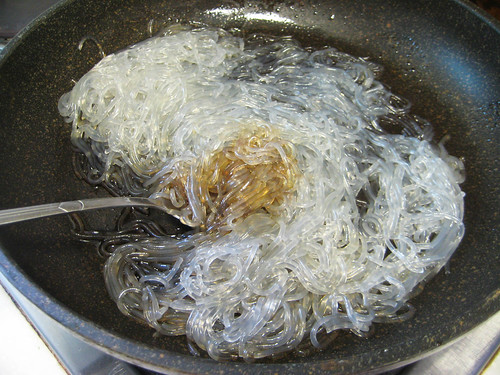
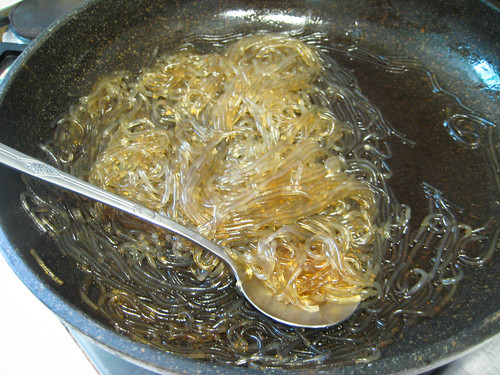
In another frying pan, heat the soy sauce, sesame seed oil and sugar over medium heat. Then add the drained noodles and slightly fry them in the pan, so that they get coated with the sauce.
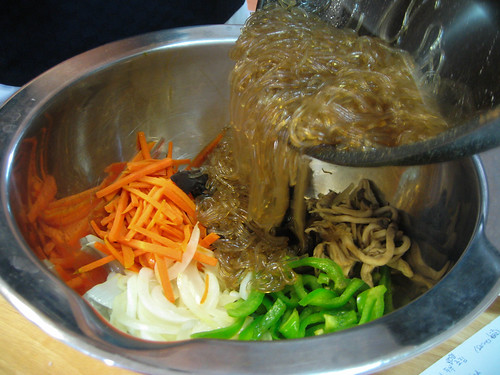
Dump the noodles directly into the mixing bowl with the veggies and begin mixing! Korean ajumas like to mix everything with their hands, so don't be afraid to do the same! Just be careful though because the noodles will be hot.
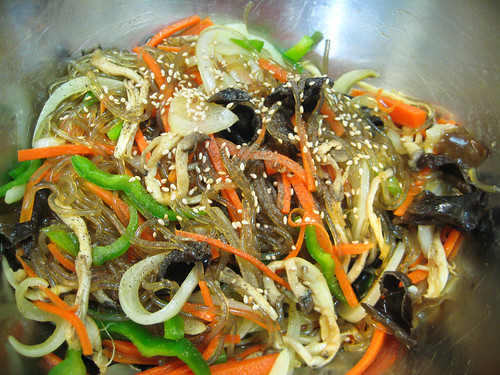
Finally, add some toasted sesame seeds and black pepper. Taste it to make sure it is seasoned to your liking, and add some extra salt, soy sauce, or sesame seed oil as needed.
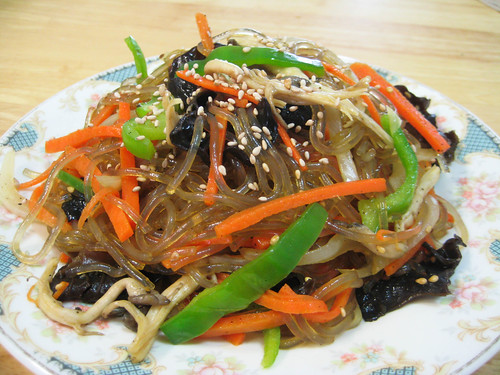
Plate it up and serve!
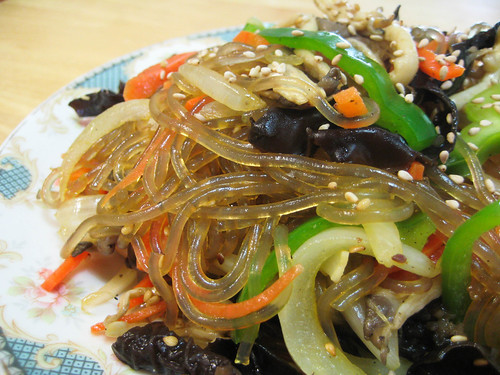
Japchae is best eaten within a day, so dig in! Not that this will be sitting around for long anyway... :)